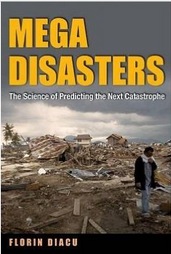
Inaccessible
The headline for this blog post summarizes the words of Ms. June Isaacson Kailes, MSW, of the Harris Family Center for Disability and Health Policy at Western University of the Health Sciences, who said “Disasters are always inclusive. Response and recovery are not – unless we plan for it.” Since September is National Disaster Preparedness Month, I wanted to re-visit the progress made in including the needs of disabled persons in emergency planning. In the second edition of Prepare for the Worst, Plan for the Best: Disaster Preparedness and Recovery for Small Businesses, I cited Lessons Learned from the World Trade Center Disaster: Emergency Preparedness for People with Disabilities in New York, a report published in 2004 by the Center for the Independence of the Disabled, New York.
The report presents first-hand accounts of how disabled persons who lived in Lower Manhattan on 9/11 were left behind. Officials charged with responsibility for emergency planning had failed to take into consideration the needs of the disabled in the case of a mandatory evacuation. People with mobility impairments could not use their chairs in the elevators of high-rise buildings when the power failed, for example. It was sad to read, but the root cause of the problem appeared, at least in my opinion, to be the social isolation of disabled persons and lack of public awareness.
In the twelve years that followed 9/11, CIDNY advocated for inclusive emergency planning that would be responsive to the needs of the disabled. They surveyed emergency shelters and identified barriers to their use. They monitored communications and suggested improvements to facilitate access. On a daily basis, they made New York City officials aware of what needed to be done and their willingness to help do it. CIDNY recruited and trained volunteers for a disaster response team, prepared “Go-kits” for use in evacuations and followed up diligently with community partners to ensure that the mistakes of the 9/11 response would not be repeated.
But despite their efforts, when Hurricane Sandy arrived in 2012, disabled residents of New York City had virtually identical – or worse – experiences as those reported by CIDNY following 9/11: they were left behind. CIDNY joined other disability advocacy groups and sued New York City’s Office of Emergency Management for violating federal civil rights law by failing to include people with disabilities in emergency planning and response.
The U.S. Department of Justice concluded in its report to the Court: “Unfortunately, despite the obvious importance of accounting for the unique needs of individuals with disabilities in planning for emergencies, New York City’s emergency plans, like many state and local emergency plans throughout the nation, fail to do so.” Does your small business employ individuals with disabilities who would have special needs in the event of an emergency? Have you taken appropriate measures in your business continuity planning to address those needs? Do you update this information for new hires? And, most importantly, have you informed your employees about the special needs of the disabled so that they can be more aware of what they need to do for the safety and well-being of their family members and neighbors in the event of an emergency?

